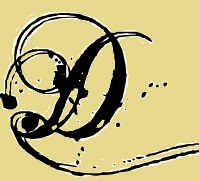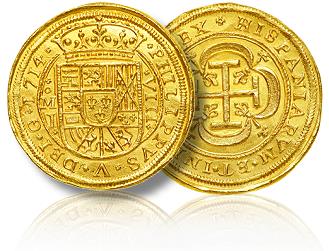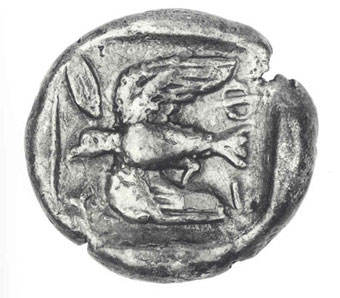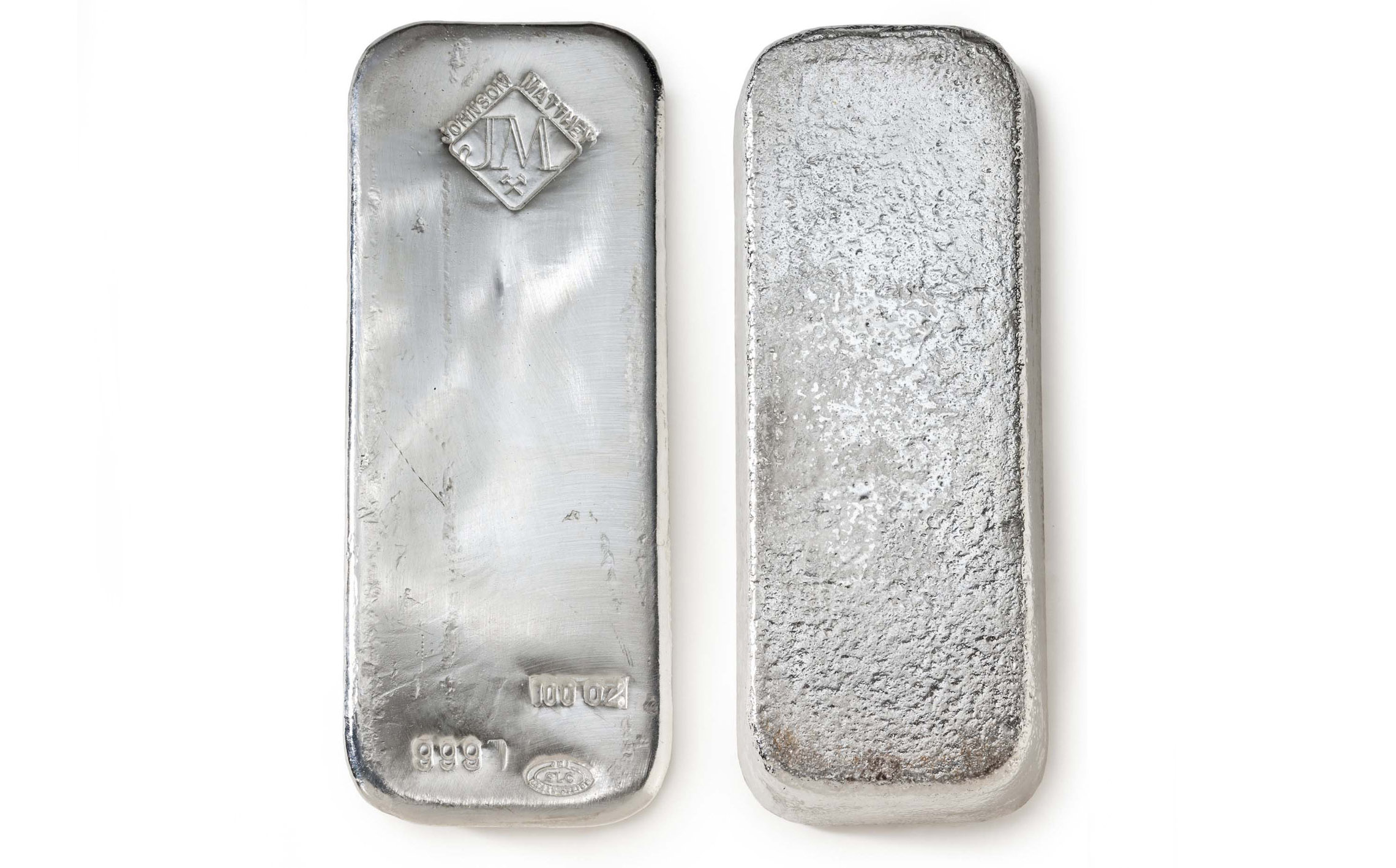Consumables (Dominaria Supplement)
Currencies of the "Imperial" West[edit]
Under the now fallen Third Imperium, House Tionne attempted to revive the old Imperial system of universal coin based on the silver standard. Very soon after the formation of the new Imperium, Charles Tionne used plunder from his vast war chest to restart the abandoned mints of Mayne, Amacidia, the Centrality, and several smaller mints. Over the first 5 years of his reign there was an immense shift in the coinage of the realm. In a herculean feat of economics and sheer transport, several large guilds aligned with the Empire assured the new coin had a wide dispersal. They returned regional coin in turn to the mints and the exchange process continued. Alongside older Second Imperium coins still in use, the monetary system of the Imperial West was unified remarkably fast. The only region to escape this conversion was Ramosia. Ramosia, pre-unification under the Renzels, used a combination of city-state currency and Arcadian money. After Adam Renzel unified the country and joined it to the Imperium the conversion process was started but never completed. The Banking House of Calder and Dane Respectively, under direction of the Gold Bank of Sarnia, never joined any Imperial Consortium and kept up their use of Arcadian money.
After the fall of the Imperium, Dragon's War and aftermath, then the Treaty of Three Swords the west is once more a patchwork of Kingdoms and Empires. Most of the coin used in trade is still that of the old Imperium, but many nascent forms of money are seeing circulation. Individual countries, especially those with existing mints, are quickly moving to make their money independent. The issue with this is the vast sum of coin in question and the lack of unified mercantilism that allowed the conversion to Imperial coin four decades ago. The only two of the new countries to start to produce new currency in any amounts are Aryth and Ramosia. The Lords of the Aryth Vale have always had a steady supply of bullion, and their mints now work day and night to put their mark on world trade. Ramosia, on the other hand, has now pressed each of the city-states' old mints into service producing House Renzel's new coin.
"Foriegn" coin, such as Arcadian money, Caliphi money, or any of the Beldroni coins are usually accepted at very fair conversions in any part of the west. Prosperity is not yet such that any merchant would turn away good silver or gold.
Imperial Currency[edit]
Gold Coins
The Third Imperium created two major denominations of gold pieces: the Crown and the Imperial. A Crown is a typical gold coin, like those that have been produced around Dominaria for thousands of years. It is worth 1gp and is easy to carry and trade in. Wealthy Merchants, Lords, Magistrates, and successful adventurers generally trade in Crowns. An Imperial on the other hand is a much larger gold coin, used primarily for the transfer of large sums of money, or indeed simply used as a unit of bookkeeping to make the math easier. An Imperial is worth 10gp, and a relatively small amount were produced. Most Imperials lie within the vaults of banks or are held in escrow against large transactions. Imperials do make it into circulation though, whether by legal or illegal means.
Silver Coins
It should be noted that silver is the primary currency by which trade and transactions occur. The Third Imperium produced/endorsed two denominations of silver: traditional silver coins, and then the Pound. Silver coins under the Imperium were produced at Imperial mints, but the regulations were much less strict. Each mint was allowed to produce a 'signature' coin, and this resulted in the wide range of silver coins in existence today. These silver coins are each worth 1sp (at a rate of 20sp to the gp), but are called by different names based on their face. Coins from Mayne are referred to as Dragons, while the Imperial mint in the Centrality made Eagles and the mint at Amacidia produced Solars. Further confusing exchange rates are the bevvy of modern mints: Ramosia produces the Lion while their vassal Amacidia still makes Solars, Malkeir produces Royals, and the Tionnic realms still mint Eagles. The second currency in silver produced by the old Imperium was the Pound. The Pound is a silver tab, three inches by one and a half, that weighs exactly one Conclave Pound. The Pound is worth 10sp and is the primary means of physical money transfer alongside Writs of Coin or Bank Notes. The Pound is also used for larger intra-town/city transactions.
Ramosi Currency[edit]
Gold Coins
Since the Treaty of Three Swords Ramosia has begun production of new currencies for circulation in Ramosia and Amacidia. Their gold piece is the Lion, but half-weight half-Lions are also circulated. A Lion is worth 1gp, and a half-Lion is 10sp. They are the standard coinage for trade in bulk goods and transactions between the wealthy. Soldiers receive their monthly payment in gold in Ramosia as well: officers in Lions and line soldiers in half-Lions.
Silver Coins
Arythi Currency[edit]
Gold Coins
Ducat?
Silver Coins
Mark?
Beldroni Currency[edit]
Gold Coins
Florin?
Silver Coins
Drachma?
Arcadian Currency[edit]
Gold Coins
Aureus?
Silver Coins
Denarius?
Creator's Note (Possible Include)[edit]
So when you look at the real world, what really makes places unique? Most everybody invented a sword and we all made some kind of autocratic government; but aside from language and religion it's the cuisine that really sets places apart. It's the difference between Kimchi and Lasagna, or Bordeaux and Sake. I am in the military and have spent a fair amount of time in places with different foods, I was thinking about that when I struck on this idea to further differentiate Ramosia from the Zomahastra or Beldron.
Sadly, it's also the difference between peyote, khat, and opium that really sets places apart. Now here's where I want to make a few things very clear. I don't want my world to be really dark in terms of drugs and I don't expect these to enter into the game unless the party goes into a seedy part of a city. All the same though the vices are a necessary part of a layered world and are really useful for giving an exotic, though dark, flair to the different places of the world.
Food[edit]
Arcadian Pastas[edit]
Dakian Pine Nuts[edit]
Malkieri White Stag[edit]
Argentan Black Angus Beef[edit]
Narrow Sea Swordfish[edit]
Elvish Way Bread[edit]
Caliphi Flatbreads[edit]
Pita, Matza, Lavash, etc.
Beldroni Flatbreads[edit]
Pizza-type food.
Zomahastran Quisine[edit]
XXX[edit]
Drink[edit]
Melidaan Reds[edit]
Daani Whites[edit]
Nefriti Emeraldes[edit]
Elven Feywine[edit]
XXX[edit]
Tobaccos[edit]
Arcadian Split-Leaf[edit]
One of the two peculiar Arcadian tobacco plants, the early Arcadians first started growing Cormyri Tobacco throughout the river plains of Northern Arcadia. Due to some vagary of the Arcadian biome, these early farmers soon began to notice an odd mutation in their plants. Some plants would mature with strange leaves which were split about 1/3 of the way from the leaf's base. The plants' medium boldness leaves still produced a rich flavored smoke which has often been described as creamy, but the two leaves bore distinctly different flavors that blended in the base of the leaf. The mutated plants produced a product of similar quality and potency, but the ability to vary flavors within a single plant allowed farmers to expand their market and make much more money. Through selective breeding, the farmers of northern and then soon southern Arcadia began to produce the now distinct product. The product is sold as left- or right-Leaf (reckoned holding the leafstem) and in an endless variety of combinations therein. The base 1/3 of the leaf is sold as cheap scraps, but any smoker will tell you that of all the gutter-cuts in the wide world, the Arcadian poor smoke the finest. Pipe leaf, cigars, and hookah blends are sold varyingly across the Empire but pipe is the most common away from the coast or Selucia.
Beldroni Brightleaf[edit]
Commonly called Sipani Leaf, Brightleaf Tobacco evolved out of a Western demand for a milder, lighter, more aromatic tobacco during the mid-3rd Age. Arturo de Voland, the famous Sipani tobbaconist, discovered a way to use a surge of charcoal heat to cure his plants to a beautiful golden yellow. When he smoked it he discovered the lighter and aromatic flavor, and he quickly spread the world to his fellow Sipani farmers. Soon the sandy soil north of Sipani, long considered sub-par, became some of the most productive land in the West. The farmers discovered that Brightleaf tobacco needs thin, starved soil, and those who could not grow many other crops found that they could grow tobacco. The Sipani Tobacco Cartel, formed soon thereafter, discovered new ways of efficient charcoal curing and soon the area was 20-30 times more profitable than it had been. Over the following few decades, Beldron became home to several of the top Tobacco producing areas in the world. Brightleaf is smoked in pipes or sailor's cigars equally and sells well in the Southern Isles.
Caliphi Small Leaf[edit]
Caliphi or "Eastern Leaf" Tobacco is a sun-cured, highly aromatic, nicotine-rich, small-leafed variety that is grown along rivers in the Southern Caliphate, Kwazarmia, and Lower Sura. Due to the vagaries of growing in and around the double-flood cycle of eastern river systems (flooding in the spring and fall) the Small Leaf strain of tobacco, with its shorter growing period, was perfected by Caliphi farmers. Throughout the history of the East, tobacco has been a delicacy due to the economics of growing a non-foodstuff crop in an area where farmland is at a premium. Farmers had to refine a plant that was fast-growing and alchemically productive, and Suran farmers first perfected the modern strain. The Suran cartels held tight secrecy over their prized plants until Sura fell to Grand Caliph Suzerain I in the 3rd Age, at which time the plant quickly spread throughout the Southern Caliphate and occupied Kwazarmia. Today's Small Leaf is the result of nearly a millenia of work since then and is the strongest mainland tobacco. Easterlings smoke the heady cured product in their traditional hookahs as well as western pipes, although this is seen as a peculiar affectation not conducive to the Easterling's concept of communal smoking (obviously wrong as the habit tends to be communal most everywhere, but the pipe vs. multi-stem hookah is an interesting debate). Small Leaf is used for cigars as well, but these are greatly prized for their potency and rarity. Recently growers have begun to produce a chewable variety after the introduction of Thuoc Loa to the area. This leaf varies mostly by region with each river in the Southern Caliphate, then Kwazarmia and Sura having a "known" variety.
Imperial Longstem[edit]
An evolution of the original human tobacco strains, the modern Imperial Longstem is a full-bodied darker tobacco smoked by farmer and aristocrat alike across the vast Westlands and as a delicacy in the East. Little is recorded of the original western plants plants through the 2nd Age, but by the end of the 2nd Age the first large plantations discovered the Longstem strain. Through Elven grafting techniques, these plantations grew taller tobacco plants that allowed for more leaves to be grown on a single plant without diminishing potency. The technique gradually spread through southern Cormyr and Illyria before migrating into Ramosia, which today is the largest producer of the crop. Longstem flourishes in the West's rich river valleys and alluvial plains but the Highland variety, with its distinct tang, also sells well. No matter the variety, Longstem is sold in three distinct bands. The top-leaf is the cream of the crop and nets top gold, the mid-leaf or "city cut" is the most widely sold, and the low-leaf or "farmer's leaf" is mostly smoked by the farmers who grow the plant, country folk, or the less-well-off. Longstem is typically smoked in the western manner (pipes), but is also used in the rolling of the cigars and cigarillos sailors smoke.
"Selucian" Bluebell[edit]
Colonial or "Selucian" Bluebell is the second of Arcadia's peculiar tobaccos. The plant is so named for the little blue flowers that grow atop the plants like the Lupine flowers of the western plains. The tobacco, an audacious blend of Eastern and Arcadian stock, is strong, bold, and given to the creamy flavor of Split Leaf. Where exactly the blue flowers developed is unclear, but farmers soon discovered their uses. The little flowers can be dried and smoked or brewed into a tea, both of which produce mild hallucinogenic effects of which the tea is stronger. Bluebell Tobacco is grown throughout Arcadia's colonies (Selucia, Felix, Concord, Corsika) but it originated in Selucia and many outside Arcadia still believe it to be grown there. The Tobacco is sold as Colonial or Bluebell, where it is mixed with the dried out petals and buds of the flowers. Either can be pipe- or hookah-smoked but the Bluebell mix is not good for cigars. The small flowers are sold in smoking variety or in the more expensive tea blends - mixed with local herbs and spices.
Zomahastran Thuoc Loa[edit]
Thuoc Loa is the incredibly strong tobacco grown by the inhabitants of the Zomahastra and the Cimmerian Caliphate. The lush, fertile soil and tropical climate produce a tobacco unlike any other. Thuoc Loa, even smoked, is strong enough to produce a heady sensation beyond any other Tobacco on Dominaria; the Zomahastrans however, chew it. Thuoc Loa is incredibly rare in the rest of the world, and getting leaves cured and prepared to chew is rarer still. The plant is most popular in southern Beldron now as Venicia, the former largest buyer, has been sacked and only recently liberated. In the east, the strength of Thuoc Loa relative to the local Small Leaf is rarely worth the price.
Drugs (Non- to Semi-Illicit)[edit]
Credit, World of Tyrus Variant Rules with my own edits in the leading description and how it fits the world. These drugs are potent substances that have a strong effect on humanoid biologies. There is nothing inherently evil about use of these drugs, but they can be easily abused. A Boxer taking Rage Powder or an Archon Mushroom addict will probably be social pariahs at least. In some areas these drugs are illegal, and in some they aren't, it depends on the local government.
In an open market, these substances may be quite inexpensive. Where they are contradband, the price may go arbitrarily high, and the quality arbitrarily low. Fraud may be common unless dealers are familiar to the purchaser, but even that is no guarantee since the dealer herself may be hoodwinked. Prices in the below descriptions are for a relatively open market, where these substances may be traded openly.
Unless otherwise specified in the drug description, a drug's effects are an Alchemical bonus and untyped penalty. Consequently, the positive effect of a drug does not stack with itself, although the penalty will. This means that one can continue to take the drug after the positive affect wears off but the negative affect from the first dose may still be in effect.
Delay Poison and Neutralize Poison and similar effects either delay the onset of a drug's effects or neutralize it altogether, as appropriate.
Wizard's Herb[edit]
Description: This green plant is dried and sold in pouches, similar to tobacco. As with tobacco, it is smoked, but unlike tobacco it tends to emit tiny sparks when lit and the exhaled smoke is a pale shade of green. Once lit, it must be smoked for at least one round, and will take two rounds to take effect. Wizard's Weed helps with clarity of thought and memory, but it makes the user nauseous. One pouch of Wizard's Weed costs 10gp and contains 10 doses.
Benefit: +1d4 Int for one hour.
Cost: -1d4 Con for two hours.
Bard's Flower Tea[edit]
Description: The bard's flower has small, white and pink petals. If dried and dissolved in water, these petals form Bard's Flower Tea, a yellow liquid with a sweet scent and taste. Brewing the tea takes 5 minutes. Quickly drinking a cup is a full round action and its effects begin one round after that. Bard's Flower Tea makes one more sociable and artistic, but also makes one feel weak. A pouch of the petals for brewing costs 5gp and is enough to make 5 pots of tea, each of which is good for four cups.
Benefit: +1d4 Cha for one hour.
Cost: -1d6 Str for one hour.
Rage Powder[edit]
Description: The red seeds of the Malyss plant (itself a source of Malyss Root poison) can be shelled and the insides ground into powder to create Rage Powder. Rage Powder is a bright red powder, usually kept in potion bottles, which can be scooped out with a small spoon and snorted for an intense effect. Snorting the powder is a full round action, and the effects take place immediately. Snorting Rage Powder gives one both a minor boost of strength and a numbness toward pain, but make the user reckless. 20gp will buy a bottle of Rage Powder which is good for 10 doses.
Benefit: +1d2 Str, +1d2 Con for one minute.
Cost: -1d6 Wis for one minute.
Archon Mushroom[edit]
Description: The Archon Mushroom tends to grow on ignored stores of grains or rice which are not kept suitably dry. It is a spotless white capped mushroom, that is dried and eaten most commonly by druids and clerics for its benefits. Eating one dose of the mushrooms quickly is a full round action, but the effects do not begin until about 5 minutes later. Eating the mushrooms gives one a sense of unity and understanding with spiritual or divine matters, but also tends to result in dizziness. They are typically sold in single doses for 1gp each.
Benefit: +1d4 Wis for one hour.
Cost: -1d4 Dex for two hours.
Acrobat's Patch[edit]
Description: An Acrobat's Patch is a piece of rough cloth lightly coated in a gluey alchemical substance. It is usually difficult to distinguish from an ordinary tattered rag, but if rubbed on the underside of the arm between the armpit and elbow, it will result in strange drug effects. Doing so is a full round action and the effect begins one round later. Using this patch makes one feel grounded and with good balance but makes them act and speak strangely for the during of the effect. One patch, which can only be used once, costs 1gp.
Benefit: +1d4 Dex for one minute.
Cost: -1d4 Cha for two minutes.
Design Notes[edit]
To maintain balance, the cost should always be at least 1/3 higher, or active for twice as long, as the benefit. The benefit and cost should be in the same terms; for example in each of the drugs listed above, benefits and costs are both in ability score modification. No drug should be able to confer its benefits again until both the benefit and cost has worn off.
Drugs (Illicit)[edit]
Hoc[edit]
Nalish[edit]
The Rishdan Connection[edit]
Click here for the full article on the Rishdan Connection, the large drug smuggling scheme that brings Nalish from the central Najiki Guunharri Islands and spreads it through the major ports of Dominaria.
XXXX[edit]
| Dominaria Campaign Settingv | ||||||||
|---|---|---|---|---|---|---|---|---|

|
Players' Handbook | Races, Languages, Classes, Magic, Religion, Literature and Lore | ||||||
| Dominaria Gezeteer | History, Geography, Climate, and Politics, Factions, Calendar and Holidays, Cosmology and the Planes | |||||||
| Dungeon Master's Guide | About, Items of Legend, Bestiary, Currency and Consumables, Law in Dominaria, Sample Places, NPCs, Variant Rules, Adding to Dominaria | |||||||
| ||||||||
Back to Main Page → 3.5e Homebrew → Campaign Settings → Dominaria



